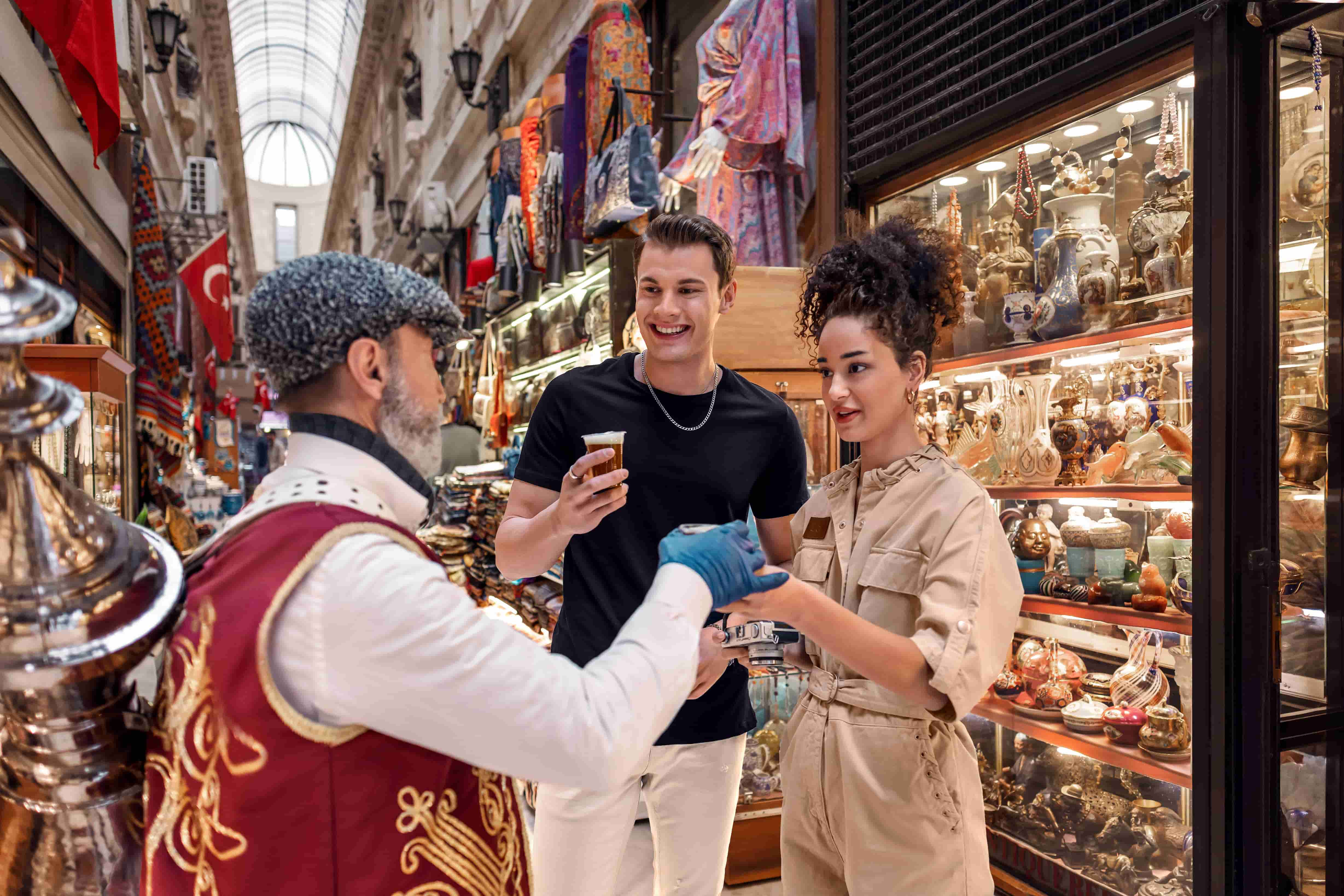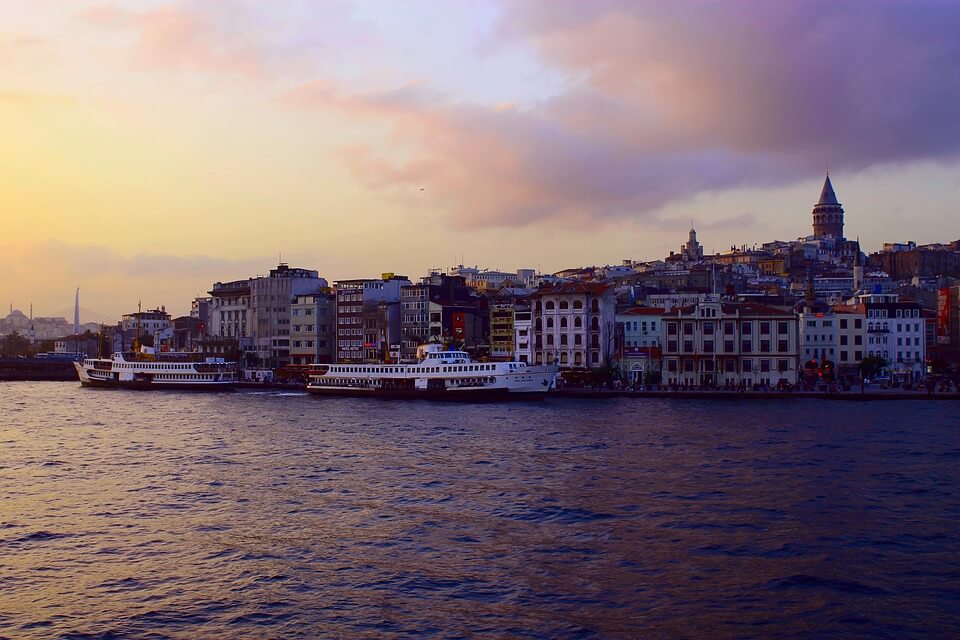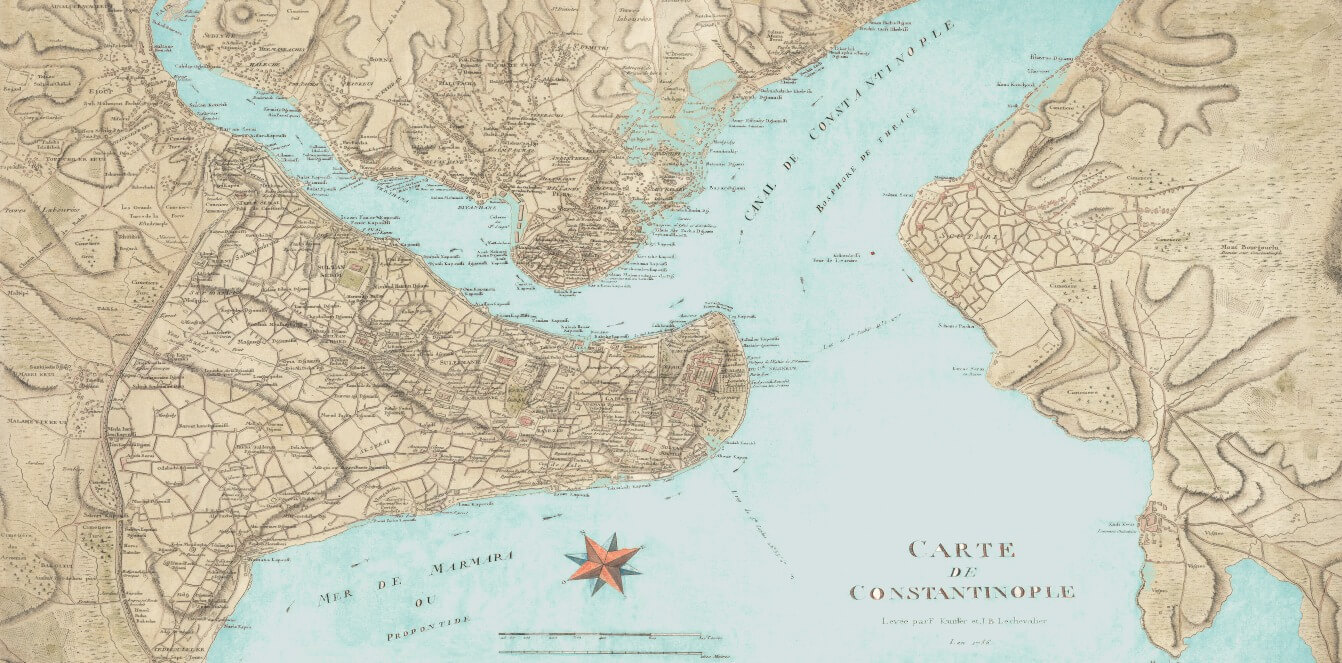Karaköy, which will welcome you with its historical buildings when you cross from Eminönü with the breathtaking view of the Galata Bridge, is one of the neighborhoods that most beautifully reflect the simultaneity of both present and past with its old office and bank buildings lined along the main street... This historical neighborhood, which has been brought to today's generation by transforming old and long-time warehouses used by other shops into modern cafes for the last 7-8 years, was one of the places where the heart of trade beat in the past. Come nad let us take you on a little exploration in this article, which includes the historical background of Karaköy, one of the oldest residential and commercial areas of Istanbul, and what you can do when you go today.
An Active Port Neighborhood in All Periods…
With the estuary separating Eminönü and Beyoğlu, Karaköy, which has been actively used as a port since the Byzantine period, was a place used by the famous merchants of history, Genoese people, for settlement and business purposes. This region, which was reserved for the use of merchants after the Ottoman conquest of Istanbul; It became one of the common living centers of Greeks, Armenians, Georgians and Jews as well as Genoese and Muslims. Continuing its function with the pier completed by a French company in 1895, Karaköy gained a new face towards the end of the 19th century with the banks opened in the area that was formerly known as Voyvoda, now Bankalar Street. In addition to the headquarters of the Ottoman Bank, insurance companies of different countries were also established during this period. In the 20th century, increased commercial activity in the area led to the further expansion of Karaköy with customs buildings, a passenger terminal and a sea warehouse. In addition to the Greek taverns along the pier, the area was once the center of brothels, including the famous Giraffe Street. Today, it is a neighborhood where ferry services are actively organized, fish restaurants and dessert shops are dense, hardware stores and electronics stores are located on Kemeraltı Street, which is the biggest street; it is still an important neighborhood.
Places to Visit in Karaköy
Today, Karaköy attracts attention not only with the area between Kemankeş and Mumhane streets, which has been renewed with the influence of the third generation coffee trend and has become a popular destination for young people, but also with its historical and touristic buildings. We have listed some of them for you:
- Religious centers: This neighborhood, where people of many nationalities and religious views live, has become one of the places where synagogues, churches and mosques coexist. Some of the small and large-scale buildings are as follows: Tofre Begadim Synagogue, Zulfaris Synagogue, Arab Mosque, St. Benoit Church, Surp Pırgiç Armenian Catholic Church and Panavia Turkish Orthodox Church.
- Art Galleries: One of the pillars of Beyoğlu, which has been the center of art for many years, is Karaköy. Istanbul Modern, Mixer, Global Karaköy, D'art Gallery and Sanatorium are some of the places you can visit in the region where there are many art galleries.
- Kamondo Stairs: The art nouveau Kamondo stairs connecting Bankalar Street and Banker Street are one of the symbols of the area. It will be the most beautiful photo stop for you when you come here.
Description: Karaköy is one of the oldest and most symbolic districts of Istanbul and we have described it for you in this article with its past, present and places to visit and see.
An Active Port Neighborhood in All Periods…
With the estuary separating Eminönü and Beyoğlu, Karaköy, which has been actively used as a port since the Byzantine period, was a place used by the famous merchants of history, Genoese people, for settlement and business purposes. This region, which was reserved for the use of merchants after the Ottoman conquest of Istanbul; It became one of the common living centers of Greeks, Armenians, Georgians and Jews as well as Genoese and Muslims. Continuing its function with the pier completed by a French company in 1895, Karaköy gained a new face towards the end of the 19th century with the banks opened in the area that was formerly known as Voyvoda, now Bankalar Street. In addition to the headquarters of the Ottoman Bank, insurance companies of different countries were also established during this period. In the 20th century, increased commercial activity in the area led to the further expansion of Karaköy with customs buildings, a passenger terminal and a sea warehouse. In addition to the Greek taverns along the pier, the area was once the center of brothels, including the famous Giraffe Street. Today, it is a neighborhood where ferry services are actively organized, fish restaurants and dessert shops are dense, hardware stores and electronics stores are located on Kemeraltı Street, which is the biggest street; it is still an important neighborhood.
Places to Visit in Karaköy
Today, Karaköy attracts attention not only with the area between Kemankeş and Mumhane streets, which has been renewed with the influence of the third generation coffee trend and has become a popular destination for young people, but also with its historical and touristic buildings. We have listed some of them for you:
- Religious centers: This neighborhood, where people of many nationalities and religious views live, has become one of the places where synagogues, churches and mosques coexist. Some of the small and large-scale buildings are as follows: Tofre Begadim Synagogue, Zulfaris Synagogue, Arab Mosque, St. Benoit Church, Surp Pırgiç Armenian Catholic Church and Panavia Turkish Orthodox Church.
- Art Galleries: One of the pillars of Beyoğlu, which has been the center of art for many years, is Karaköy. Istanbul Modern, Mixer, Global Karaköy, D'art Gallery and Sanatorium are some of the places you can visit in the region where there are many art galleries.
- Kamondo Stairs: The art nouveau Kamondo stairs connecting Bankalar Street and Banker Street are one of the symbols of the area. It will be the most beautiful photo stop for you when you come here.
Description: Karaköy is one of the oldest and most symbolic districts of Istanbul and we have described it for you in this article with its past, present and places to visit and see.






